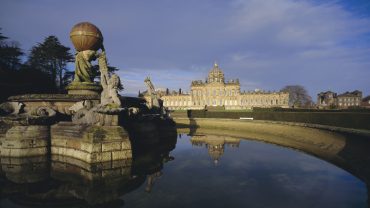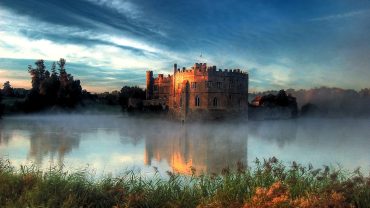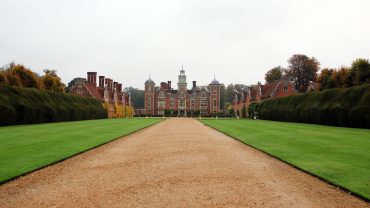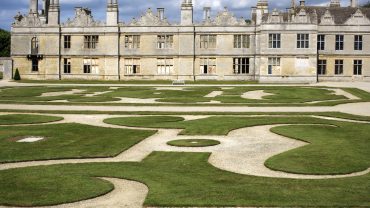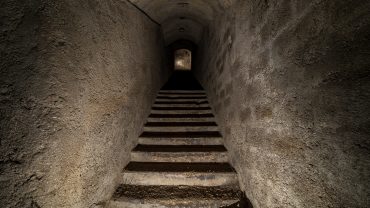Brutalist architecture in the UK is one of the most distinctive and debated movements to emerge from the twentieth century. Born in the aftermath of World War II, this style is defined by its unapologetic use of raw, unfinished materials – most notably concrete – and its bold, geometric forms.
The movement’s name derives from the French phrase béton brut, meaning ‘raw concrete,’ and it quickly became synonymous with an architectural approach that valued honesty, functionality, and structural clarity over ornamentation.
Here, we’ll take an in-depth look at Brutalism in the UK, its origins and characteristics, as well as discovering the movement’s prominent architects and the nation’s most famous Brutalist buildings.
The Origins of Brutalist Architecture UK

Bare Brutalist beauty, the Alexandra Road Estate (Credit: VictorHuang via Getty Images)
The origins of UK Brutalism can be traced to post-war Britain, where architects faced the urgent challenge of rebuilding the country’s devastated cities. Influenced by the modernist ideals of figures like Le Corbusier, whose Unité d’Habitation in France set a precedent for concrete construction, British architects Alison and Peter Smithson pioneered the style with projects such as Hunstanton School in Norfolk. Their work helped define Brutalism in the UK as a movement rooted in social responsibility and the belief that architecture should serve the needs of the many, not just the few.
Brutalist architecture in England has always sparked strong opinions. Some people admire its bold shapes and the way it highlights the raw beauty of concrete and steel, while others find it harsh, unwelcoming, or even intimidating. Many Brutalist buildings in the UK were used for social housing and public spaces, which has made them symbols of hope and hardship in the years after World War II. The most famous examples of which are Ernő Goldfinger’s Trellick Tower in West London, and Neave Brown’s Alexandra Road Estate in Camden. Today, these striking structures are sometimes seen in a new light, as some appreciate their unique style and the stories they tell about our cities and communities.
The Characteristics of Brutalism

Repetitive geometry, Park Hill Flats in Sheffield (Credit: photo Paolo Margari - paolomargari.it via Getty Images)
Brutalist architecture in the UK is defined by several distinctive features that set it apart from other modern architectural styles:
Exposed Raw Materials | Example: Preston Bus Station
The most recognisable symbol of Brutalist buildings is the use of raw, unfinished concrete, often left exposed inside and out. Other materials such as brick, steel, glass, and timber are also used, but they’re always left in their natural state.
Blocky, Monolithic Forms | Example: The Barbican Centre, City of London
Brutalism typically has a heavy, fortress-like appearance, characterised by big, block-like structures and thick walls. These forms often appear stacked or modular, creating a bold and imposing presence.
Geometric & Repetitive Patterns | Example: Park Hill Flats, Sheffield
The style emphasises simple, graphic lines and repetitive geometric shapes, with virtually no ornamentation at all. This can result in a striking, sculptural quality that makes each building visually distinctive, but divides opinion.
Functional & Utilitarian | Example: The Brunswick Centre, Bloomsbury
Brutalism prioritises practicality and utility over ornamentation. The layout and appearance are driven by the building’s intended use, with features like small windows and clearly defined functional zones.
Rough & Unfinished | Example: Dunelm House, Durham
Surfaces are mostly left unpainted, rough or textured, often showing the marks of the construction process, such as the wood grain from concrete formwork.
Monochrome | Example: The National Theatre, London
Brutalist architecture in England usually features a limited colour palette, dominated by austere shades of grey from the concrete, which further emphasises their raw, utilitarian aesthetic.
Visible Structure & Services | Example: Lecture Theatre Block, Brunel University
In many Brutalist buildings, structural elements and building services (like pipes and ducts) are intentionally left exposed, highlighting the building’s construction and inner workings.
The Most Famous Figures in UK Brutalist Architecture

Sir Denys Ladsun's student halls at the University of East Anglia (Credit: AndresGarciaM via Getty Images)
Several architects stand out as key figures who shaped and defined the British Brutalist movement:
Alison and Peter Smithson
This husband-and-wife duo are widely regarded as pioneers of Brutalist architecture in the UK. They popularised the term “New Brutalism” and championed a design philosophy that emphasised honesty in materials, modular construction, and a focus on community. Projects like Robin Hood Gardens in East London symbolised their belief in architecture that reflected its inhabitants and surroundings. Despite controversy over some of their projects, their influence on postwar British architecture was profound.
Ernő Goldfinger
Hungarian-born UK-based architect Goldfinger became synonymous with the Brutalist style through iconic buildings like Trellick Tower and Balfron Tower. His work is known for its bold use of exposed concrete, geometric forms, and commitment to social housing. Goldfinger’s designs have become some of the most recognisable – and debated – examples of Brutalism in England.
Sir Denys Lasdun
Lasdun is celebrated for his innovative use of modular forms and his ability to blend functionality with striking visual impact. His most famous works include the Royal National Theatre in London and the University of East Anglia’s ziggurat-style student accommodation. Lasdun’s projects are admired for their elegance, precision, and the way they push the possibilities of concrete as a material.
Chamberlin, Powell & Bon
This architectural firm is best known for designing the Barbican Centre, one of the UK’s largest and most ambitious Brutalist complexes. Their work is characterised by large-scale, integrated urban planning and a commitment to creating cohesive communities within the city. The Barbican remains a landmark of British postwar architecture.
Owen Luder
Luder’s work, including the Tricorn Centre in Portsmouth and the Gateshead Trinity Centre, embodied the raw, uncompromising spirit of Brutalism. While some of his buildings have been demolished, his influence on the movement’s development and its legacy in British cities is significant.
Other well-known architects that have been at the forefront of Brutalist architecture in the UK include Patrick Hodgkinson, whose Brunswick Centre in Bloomsbury offered a unique approach to residential living, and John Heywood, who designed the Brunel University Lecture Centre which became famous through its appearance in Stanley Kubrick’s 1971 film A Clockwork Orange.
From Greyness to Greatness: Brutalism in the UK

The Birmingham New Street Signal Box (Credit: peterhowell via Getty Images)
Over the years, architectural styles have risen, faded, and sometimes made surprising comebacks. Yet few have sparked as much debate as Brutalism.
From Preston Bus Station in Lancashire and St. Peter’s Seminary in Cardross, to Andrew Melville Hall at St. Andrews University and the iconic Birmingham New Street Signal Box, Brutalist architecture in the UK stands out as one of the most polarising styles in history – admired by some and disliked by others in equal measure. When it first appeared, Brutalism was seen as a forward-thinking and hopeful approach, earning widespread praise and enthusiasm from the public.
Today, Brutalism is experiencing a modest revival, with a new generation of architects, artists, and enthusiasts finding beauty in its raw forms and honest materials. While some still see these concrete giants as stark or uninviting, others celebrate their sculptural qualities and the bold vision they represent.
Across the UK, many Brutalist buildings that were once threatened with demolition are now being protected and reimagined, sparking fresh appreciation for their unique place in architectural history.



